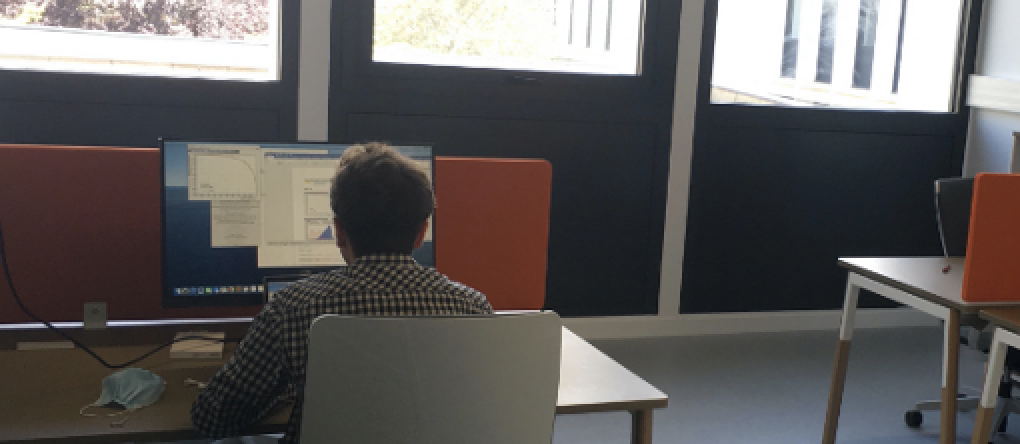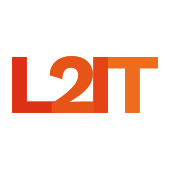
Interns are welcome !
Every year the L2IT offers a limited number of internships (stages) to outstanding students interested in undertaking a research project in one of the main research teams of the lab (particle physics, gravitational waves, nuclear physics, scientific computing and data, including AI techniques). These internships allow students to work together with leading researchers on some of the most exciting topics in fundamental physics, exposing them to the most advanced theoretical, computational, observational and instrumental methods currently used in large-scale international experiments, in particular LISA, Virgo and ATLAS.
Master students (M1 and M2) and students at écoles d’ingénieurs interested in a research internship at L2IT are invited to contact us (see below for the application process). Any internship at L2IT will not be automatically followed by a PhD scholarship. However, students who successfully complete a research internship at L2IT usually greatly improve their chances to be selected for a PhD programme if they decide to continue their studies. The L2IT itself offers at least one PhD position per year.
Bachelor students (L3) who have the possibility to do a short research internship as part of their curriculum of studies are also very much welcome to contact us. One ot two bachelor students per year are generally offered an internship at L2IT.
The working language for research activities at L2IT is mainly English. Students are expected to possess an acceptable level of English to apply for an internship at L2IT.
If you have any questions or need further information, please feel free to contact any member of L2IT (see list of current members).
Application process
If you are a motivated student interested to apply for a research internship at the L2IT, please send the following documents to the head of the research group in which you would like to carry out your internship (see below for names and contacts):
-
-
- a curriculum vitae;
- a document listing the results of all your university exams;
- a motivation letter (max one page).
-
The application dead-line to send these documents is November 15th, 2024.
Applications will be accepted until the positions are filled, but please note that a selection process will take place immediately afterwards this deadline. Few candidates will be selected for remote interviews at the beginning of December. Interviews can be held either in French or in English according to the candidate’s preference, but in any case please be prepared to have your English level tested during the interview.
Contacts & Inquiries
Please send your applications and inquiries to the following persons:
-
-
- Catherine Biscarat (catherine.biscarat@l2it.in2p3.fr) | Head of the Computing, Algorithms and Data group
- Joany Manjarres (joany.manjarres@l2it.in2p3.fr) | Head of the Particle Physics group
- Nicola Tamanini (nicola.tamanini@l2it.in2p3.fr) | Head of the Gravitational Waves group
- Giuseppe Verde (giuseppe.verde@l2it.in2p3.fr) | Head of the Nuclear Physics group
-
Examples of internship projects
Here are some examples of internship research projects currently offered at L2IT. Please do not hesitate to mention one or more of these projects in your application if you are interested in them. For more information please feel free to contact members of the L2IT.
- Software Quality and LLMs-based Support Tools for Code in a Machine Learning Framework for Particle Physics at the CERN LHC
Computing, Algorithms and Data team, → more information - Inferring the population of spinning massive black holes from LISA data
Gravitational Waves team, → more information - Challenging cosmology with gravitational waves
Gravitational Waves team, → more information - Evaluating astronomical support for LISA gravitational-wave events
Gravitational Waves team, → more information
Details on the above listed subjects
| Computing, Algorithms and Data
Software Quality and LLMs-based Support Tools for Code in a Machine Learning Framework for Particle Physics at the CERN LHC
The Large Hadron Collider (LHC) at CERN, where the Higgs boson was discovered, will undergo a major upgrade in 2029, pushing further the limits of our understanding of particle physics. This new phase requires the creation of faster algorithms, in particular for the tracking of charged particles. For this purpose, the L2IT team has created the ACORN Python framework dedicated to innovative algorithms based on Geometric Deep Learning including Graph Neural Networks. The internship will focus on significantly improving the software quality of the ACORN framework, in particular by enhancing its packaging, continuous integration and deployment processes, its tests and documentation. In addition to applying best practices, you will explore the use of innovative LLM-based tools to support code design, documentation generation, and other software quality engineering aspects. You are a student in a Computer Science Master or in an Engineering School and you wish to apply and develop your knowledge in Quality Software Engineering including using modern AI tools, this offer might be interesting for you ! You will have the opportunity to enhance your skills while contributing to our R&D efforts in a highly stimulating and dynamic research environment as part of a major international scientific collaboration.
→ more information
| Gravitational Waves
Inferring the population of spinning massive black holes from LISA data
LISA is a future space-based detector that will fly in the mid-2030s and detect gravitational waves at low frequencies, targeting massive black hole binaries (MBHBs) with masses of millions of solar masses. The formation and evolution of these MBHBs is one of the big open questions in astrophysics, and LISA will open a new way to probe their population in the high-redshift universe, being able to measure the individual masses and spins of MBHBs with a very good accuracy. The event rate for these mergers is uncertain, but the astrophysical community has spent a lot of effort in recent years to build models for this population of sources. LISA has the potential of bringing important information on the astrophysical processes at play: in particular, measuring the spin of thoses black holes could tell us about the accretion processes through which they have grown. Hence the question we will address in this internship: what can LISA learn of the spin distribution of those MBHB systems ? We will both develop a simplified parametrized model population model, and investigate the constraints that can be obtained on the spin population parameters in a hierarchical analysis of simulated LISA data.
Challenging cosmology with gravitational waves
Gravitational waves (GWs) constitute a new observational instruments which convey new information about our Universe and its structures in a completely complementary way with respect to standard electromagnetic observations. In particular GWs emitted by the mergers of black hole and neutron star binaries can be used to test how fast the universe expands at different epochs of its evolution. Consequently different cosmological models can be tested with GWs, with new possible insights into the contemporary mysteries of the Universe such as dark energy, dark matter, the Hubble tension, and others. This internship project aims at investigating alternative cosmological model using GW data from current and next generation GW observatories. The student will become familiar with the basics of the theory of GWs and with Bayesian statistical inference, she/he will get acquainted with some of the advanced theoretical and computational state-of-the-art techniques used in GW cosmology. She/he will also have the opportunity to work within the framework of large international collaborations dedicated to observe GWs, in particular the LIGO-Virgo-KAGRA Collaboration, the LISA Consortium and the Einstein Telescope Consortium.
Evaluating astronomical support for LISA gravitational-wave events
The planned space-based gravitational-wave observatory, LISA, will detect gravitational waves from various types of sources, such as massive black hole binaries or extreme mass ratio inspirals. These observations can be used to infer cosmological parameters, such as the Hubble constant. To fully utilise the observations of LISA, we need to complement these detections with information from galaxy catalogues, showing the possible host galaxies where the event could have happened. In this project, we are going to evaluate our current and future astronomical support for the LISA mission, using real and simulated galaxy catalogues to find out how much such databases can help us and to motivate future galaxy catalogue development. By identifying possible factors hindering GW cosmology from the astronomical side, we can give suggestions on what developments to focus on before the LISA mission starts.

